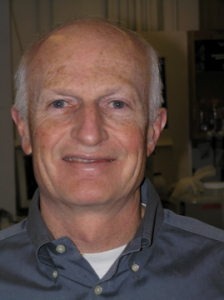Molecular-Level Rigidity Sensing in Metastasis
Matrix rigidity is an important physical aspect of cell microenvironments; however, the mechanism by which cells test substrate rigidity is not clear. Submicron pillar studies indicate that cells may sense rigidity by measuring the forces required for local standard contractions at the cell periphery (pinching activity) (Ghassemi et al., 2012. PNAS 109:5328). Recent observations show that sarcomere-like units drive step-wise contractions that depend upon tropomyosin to sense rigidity and block growth on soft surfaces (Wolfenson et al., In Press). In addition, two tyrosine kinases involved in cancer progression are part of the contractile units and control distance and time of contractions to modify rigidity sensing. In the past, tyrosine kinases were found to be required for the cell rigidity sensing (Prager-Khoutorsky et al., 2011. Nat Cell Biol 13:1457). We have focused on two kinases, AXL and ROR2, whose knockdown causes cells to build large focal adhesions on soft surfaces as well as on rigid, even though overall cell contractility on the soft substrate remains weaker. Surprisingly, the mechanical characteristics of local contractions, unlike the global ones, are significantly altered by AXL or ROR2 knockdown, increasing either magnitude or time of contraction. Further, phospho-AXL and ROR2 localize to sarcomeric contraction units and associate with the major contractile components, tropomyosin-1 and myosin IIA (AXL), or filamin A (ROR2) (Yang et al., submitted). Thus, we suggest that these tyrosine kinases affect adhesion-dependent mechanosensitivity and consequently metastasis and morphology changes in development through their regulation of local mechanosensory contractions by sarcomere-like units with tropomyosin.
Bio
 Professor Michael Sheetz is the Director of the Mechanobiology Institute, National University of Singapore (NUS), a Distinguished Professor at NUS and a Professor at Columbia University. Prof. Sheetz has over 40 years of experience in cell biology and biomechanics and his seminal work in studying cellular motor functions led to the discovery of a novel class of motor proteins called kinesins. A recipient of several prestigious awards given in recognition of his contributions to biomedical sciences, Prof. Sheetz is a pioneer in the emerging field of mechanobiology. Prof. Sheetz’ lab focuses on studying the molecular mechanisms of force sensing and transmission during cell motility.
Professor Michael Sheetz is the Director of the Mechanobiology Institute, National University of Singapore (NUS), a Distinguished Professor at NUS and a Professor at Columbia University. Prof. Sheetz has over 40 years of experience in cell biology and biomechanics and his seminal work in studying cellular motor functions led to the discovery of a novel class of motor proteins called kinesins. A recipient of several prestigious awards given in recognition of his contributions to biomedical sciences, Prof. Sheetz is a pioneer in the emerging field of mechanobiology. Prof. Sheetz’ lab focuses on studying the molecular mechanisms of force sensing and transmission during cell motility.
